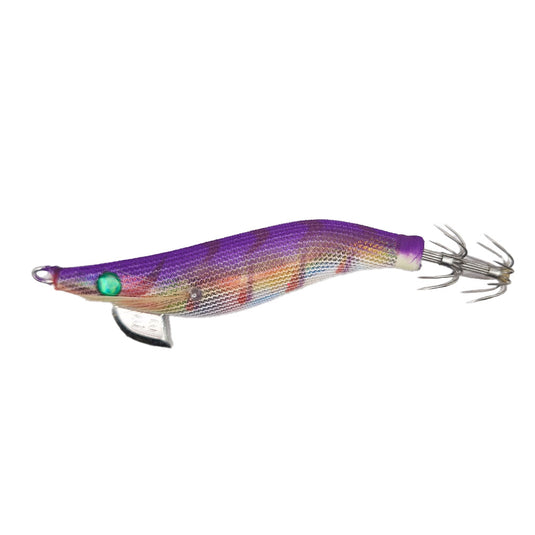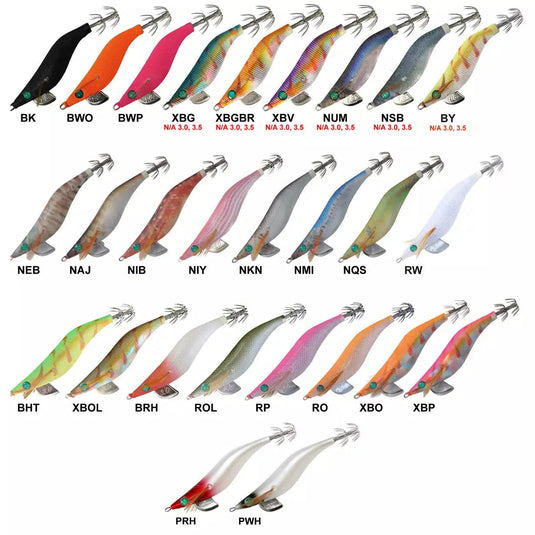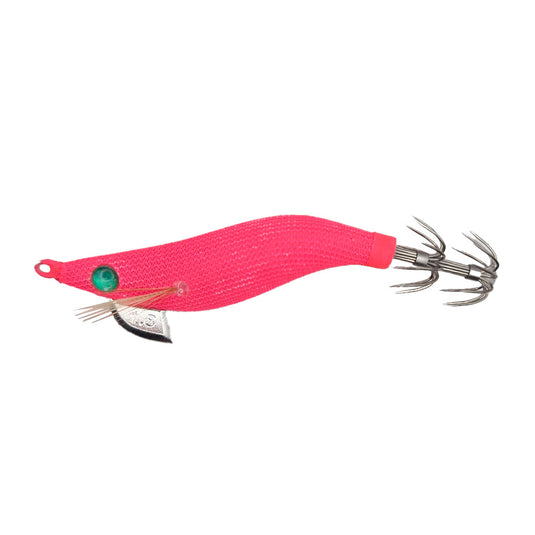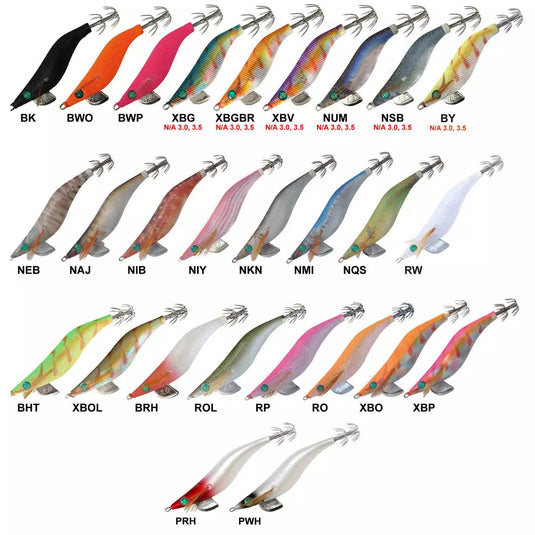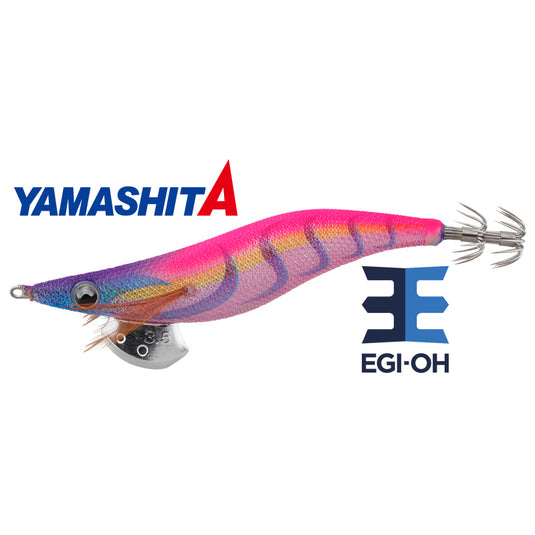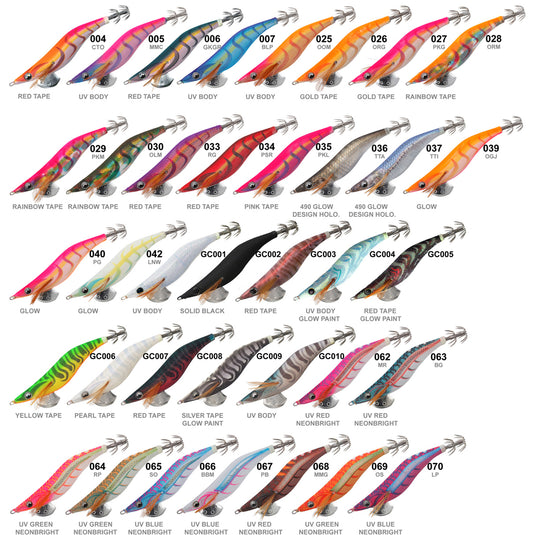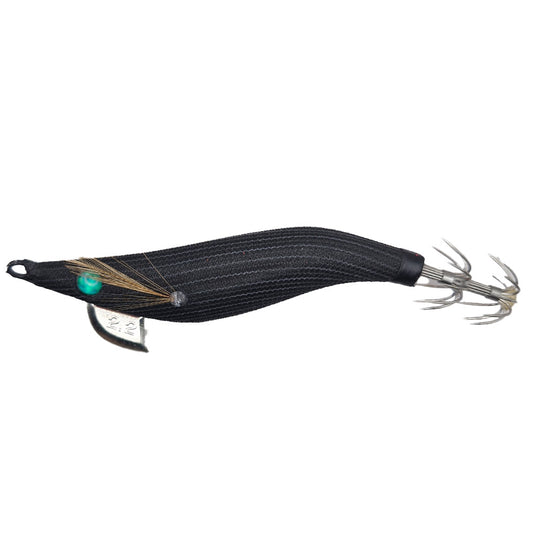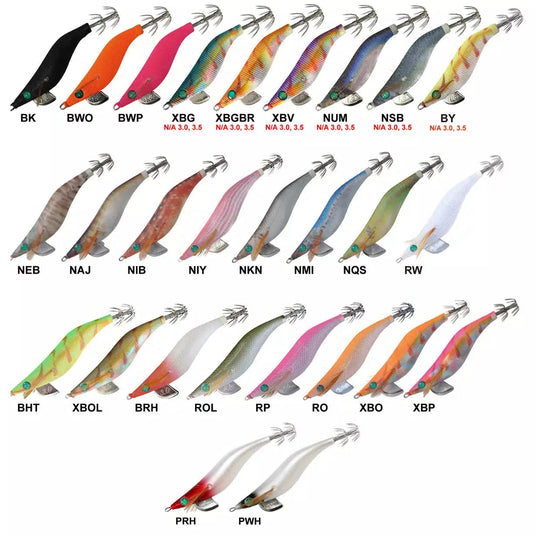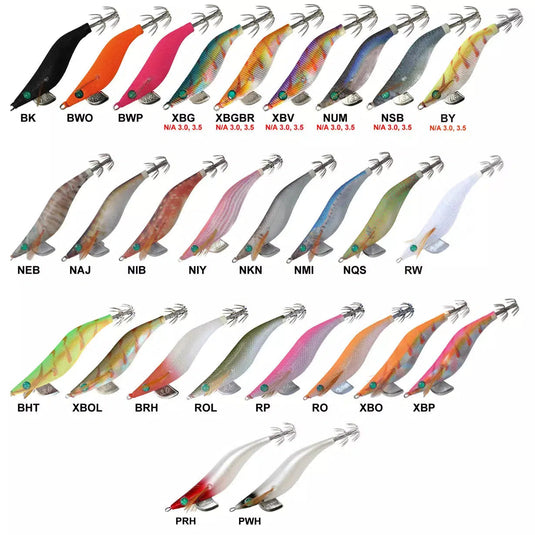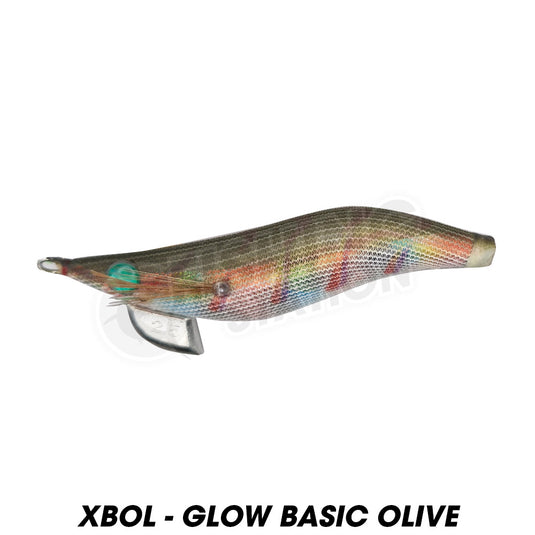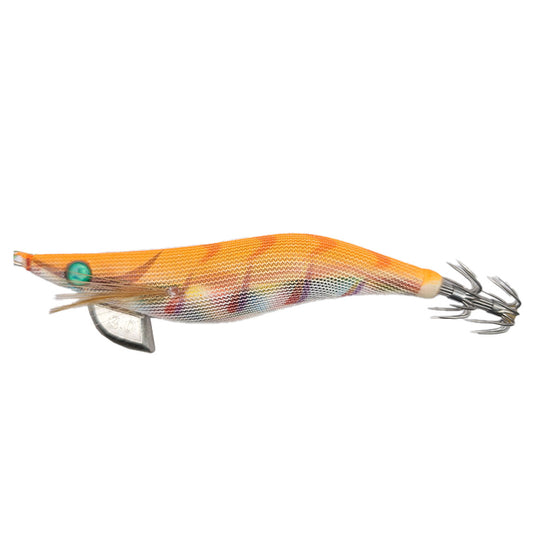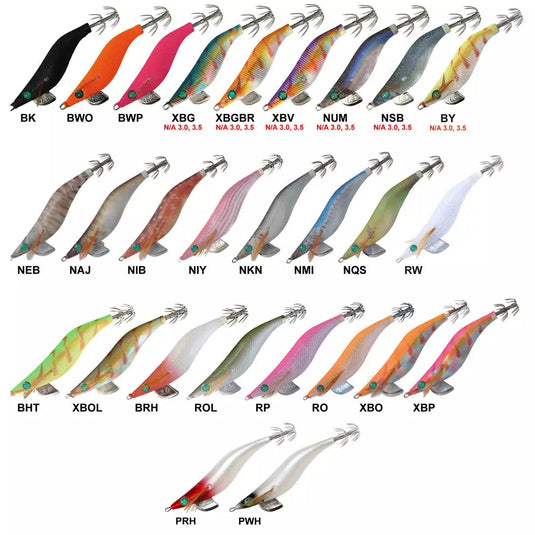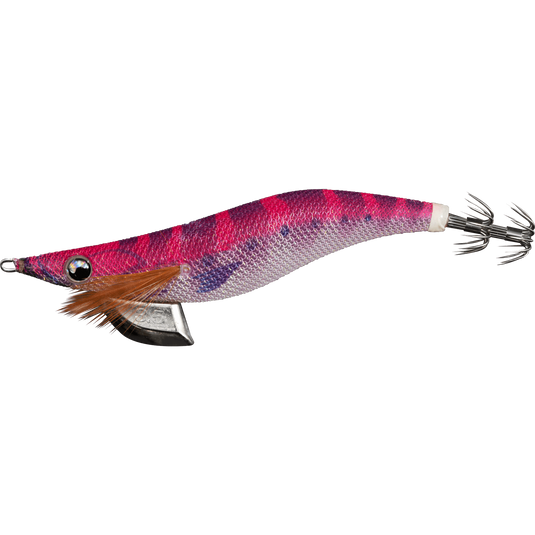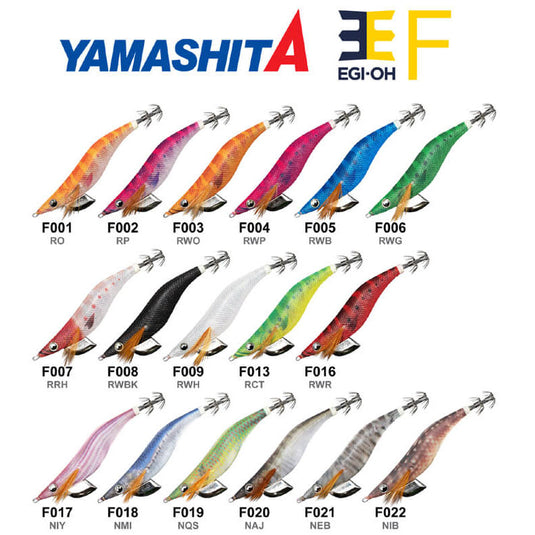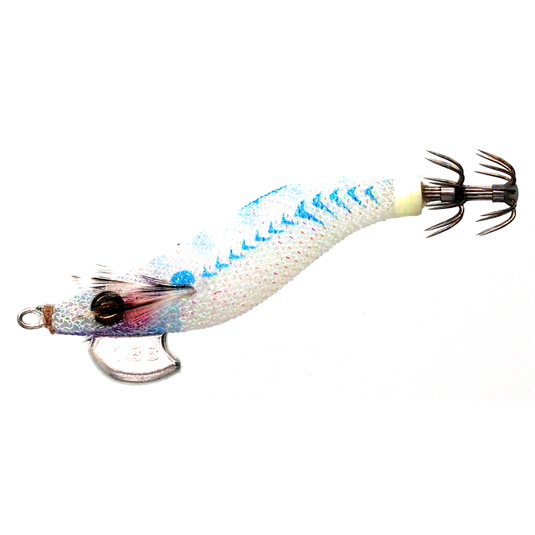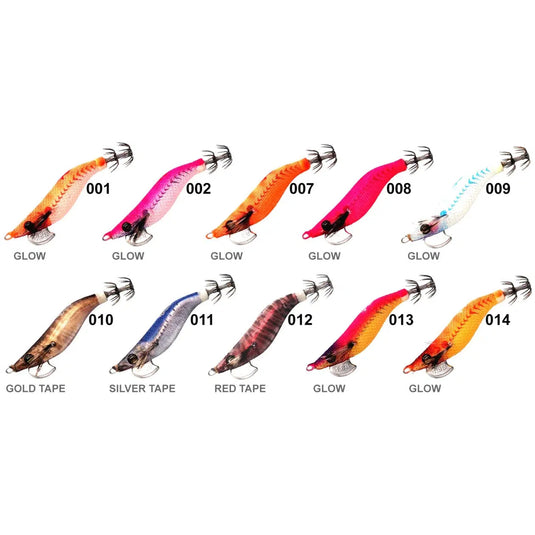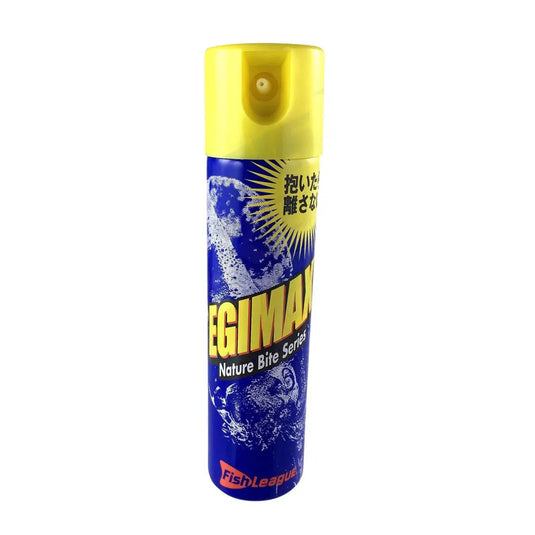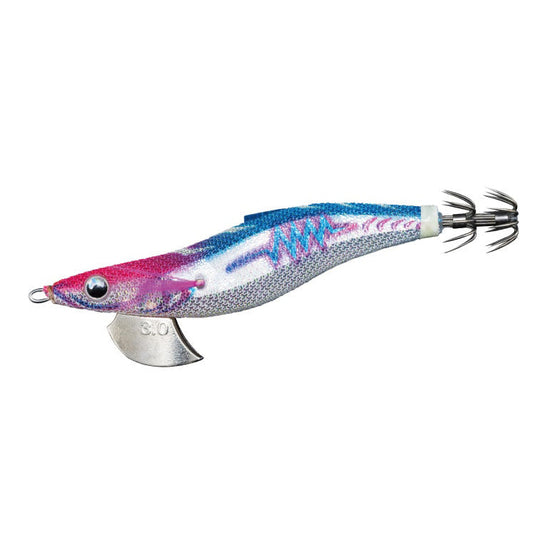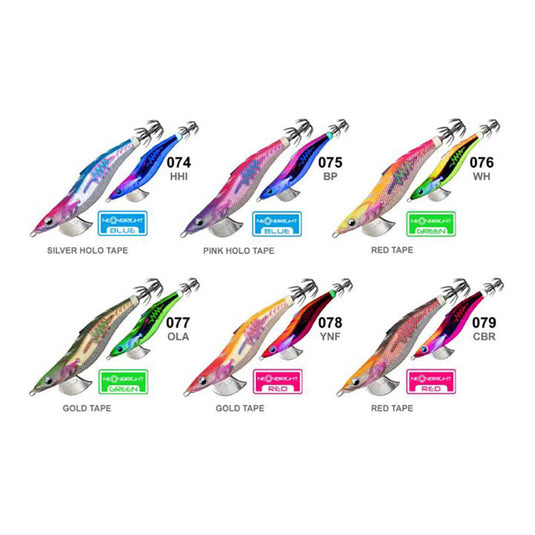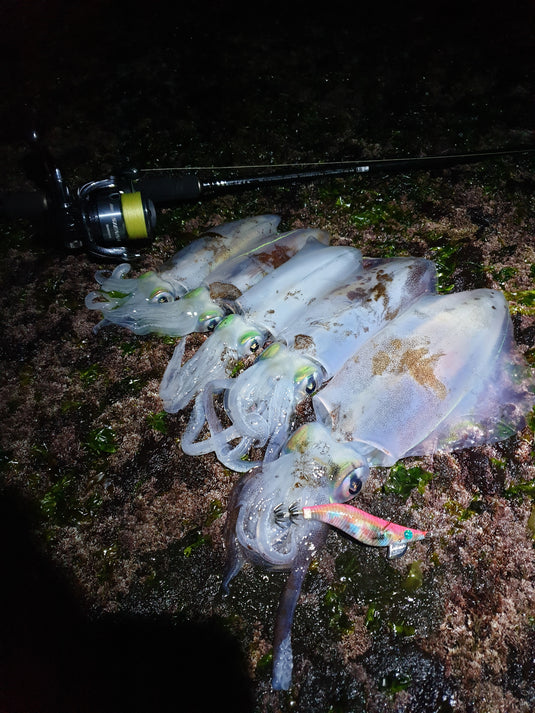
INTRODUCTION
Squid are more of the most prolific animal species in the world! There are around 300 different species covering all of the world’s oceans. From shallow bays to the deepest trenches. Squid are a mollusk, more correctly, a Cephalopod (Latin for head-foot and includes octopus, cuttlefish and nautilus.) Squid are not only delicious but make awesome bait for mulloway, snapper and much more!
Fortunately for us here in Australia squid are easy to find for both land and boat anglers and as we move into the cooler months these delicious mollusks will become bigger and hungrier. Learning how to catch squid can be a little tricky to start but with our help we’ll guide you through some tips, techniques, gear and locations to help you catch these critters!
SOUTHERN CALAMARI
Southern Greeneye Calamari (Sepioteuthis australis) are a coastal species of Squid, which prefer clear water. This species is characterised by their green-white eyes, colourful appearance, and wing-like fins that span across their whole hood. Calamari’s size averages at around 20cm in hood length (Not including their head and tentacles), but can commonly exceed a 30cm hood. In some cases, Calamari have been known to pass 50cm length hoods. Calamari. Southern calamari squid only live for around 300 days.
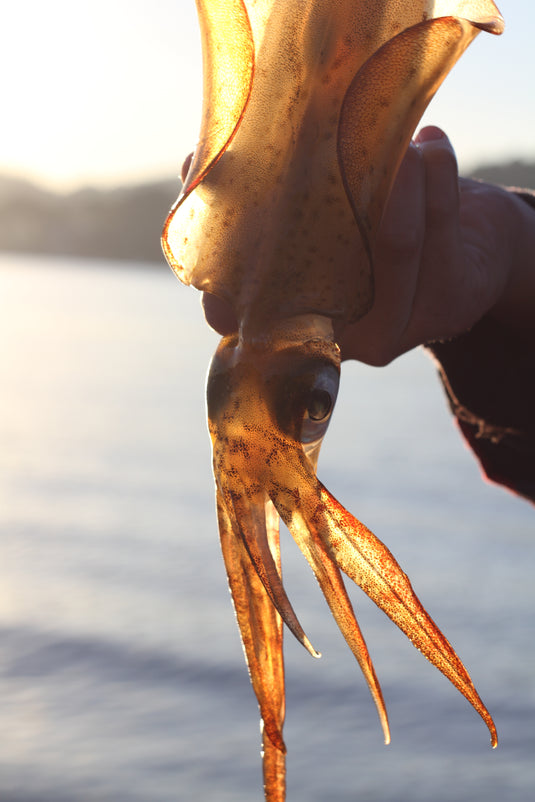
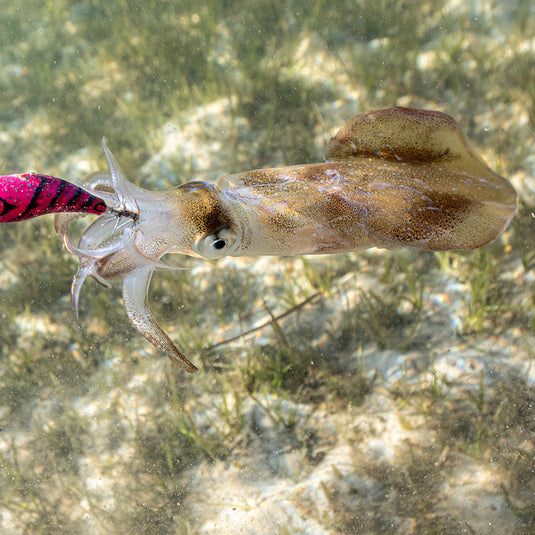
ARROW SQUID
Arrow Squid (Doryteuthis plei) on the other hand, prefer enclosed waters such as harbours and estuaries. Often found within the urban structure of Sydney's infrastructure, these Squid are characterised by their streamlined appearance, and arrow shaped winglets on their hood and only cover the last third of their body, unlike calamari squid, their wings run along their whole body. Arrow Squid are known to have more monotone colours than Calamari, but still have the ability to change from white to red when frightened or feeding. These Squid can reach a maximum hood length of 25cm, but are commonly caught at all sizes, ranging from 5cm, to 20cm hoods.
WHERE TO FIND SQUID
Squid can be found almost anywhere. From inshore reefs, estuaries, ocean rocks and more. One thing squid love is structure. Boulders, seaweed/sea grass and man-made structures (wharves etc) which they use to their advantage to hide and stalk their prey. As they are sight hunters, light can also play a factor in helping you find squid. Especially when squidding at night.
With this in mind start your hunt by targeting headlands, weed beds and inshore reefs. It’s best to drift these areas to cover ground. In Sydney Harbour it’s worth trying out north and south head (on calm clear days) around Balmoral and the rocky outcrops around Middle Head (please look into the fishing restrictions before squidding in the harbour.
In Pittwater it’s best to start around the western foreshore from Long Nose point up to West Head or around Barrenjoey Headland or one of the many lit-up wharves at night.
For the land based angler it’s worth trying any wharf in the harbour or Pittwater next to or near seaweed/rock structure. For the experienced angler many of the rocky headlands will provide squid but only go out on clear and calm days and wear the appropriate safety gear.
Tip: Don’t spend too much time in one spot. Try and move around to find squid.
GEARING UP
Rod Choice
Squidding or Eging (Japanese art of catching squid) has come a long way. Science has played a huge role in how to approach catching squid in mimicking their natural prey. If you’re looking to really invest in squidding you can dive straight into the specific gear designed for squid like the Daiwa Emeraldas. These rods are designed to be ultra light for maximum sensitivity. What makes a squid rod different? They are usually longer in length to aid in longer casts and to impart larger “hops” of the lure. In addition to this they also feature specialised guides which hug the blank to provide maximum action to the rod blank. This is so the rod does all the work when the squid takes it's big lunges. In short they are designed to cast your lure really far and take the lunges of a fighting squid.
Line and leader
Again you can invest in a squid specific line (these are usually pink in colour to make them less visible in the water) but any good quality braid line will be fine. As for leader we do recommend opting for the fluorocarbon. It’s tougher and less visible.
Tip: Use a slightly stronger line and leader when squidding - around 10 to 12lb. This gives you some strength when pulling the lure out of the seaweed.
Reel Choice
As for a specific squid reel you'd be looking at something like the Daiwa Emeraldas. These are one of our go-to reels for squid. These reels are designed to have a larger spool size to aid in the casting distance however generally have a “shallow” spool. This is because squid don’t take long runs like a fish so you don’t need as much line. This also decreases the weight of the reel. Not only that but the reels have smooth drag systems to allow the squid to take strong lunges without popping the lure.
Yes, of course you can invest in the specific squid gear but if you’re starting out or just want to catch squid now and then it’s totally fine to use a 2 to 4 kg graphite rod paired with a good spinning reel like the Shimano Raider (Which also has an egi rod in the range) paired with the Shimano Sedona this combo will be able to handle any size squid.
Tip: If you’re fishing off the ocean rocks we do recommend using a slightly longer rod for longer casts and to keep your line clear from the sharp rocks. A rod like the Daiwa Crossfire.
GEARING UP FOR SQUID
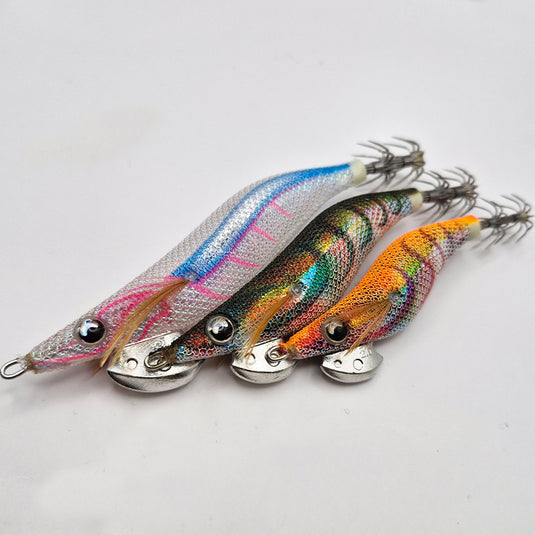
LURE CHOICE
This is a big topic. Again, as we’ve mentioned squid are sight hunters so everything about a lure has to be appealing to a squid’s eye. The most common form of squid jig design is the prawn shape and what makes an expensive lure so good is the way it sinks. That’s the key in attracting a squid. Lure brands like Yamashita, Daiwa, Shimano and the like will do this straight out of the box so you don’t need to worry about the quality but rather the colour and size. Let’s break it down.
COLOUR
The colour for squid isn’t like what we see. For us we see a green lure however, squid (and fish) don’t have the colour receptors like we do however, they do have light receptors. Colour plays a big role in lure choice but you need to think of how much light it will show off or how much of a silhouette it will create for a squid. Most quality squid jigs will be made with a two - part colour scheme. First is the outer “skin” and the second is the base colour or “foil” or the colour of the bare jig. For example, a base colour of gold with an outer skin of orange is great for clear sunny mornings. The golden shine reflects the golden sunrise light and the orange skin is really appealing under water.
Now, there is also UV light/functions which you may need to consider. Squid's eyes are so sensitive to light that they can detect light we can't see like UV. For example - a lure to us we just see the colour lightwaves. If it's enhanced with UV reflection it will stand out like a beacon to a squid as they can detect the UV wave length. UV enhanced lures work best on overcast days when the UV light is strongest and white light is weakest.
On really low light like almost dark it’s sometimes worth using a really dark colour. Purples, reds with red base colour or “foils” can be really good as they present a good silhouette against the drop in light. Fortunately there are good guides to help with this like Yamashita’s colour graph so it’s super important to have a variety of skin colours and foil colours to match your conditions.
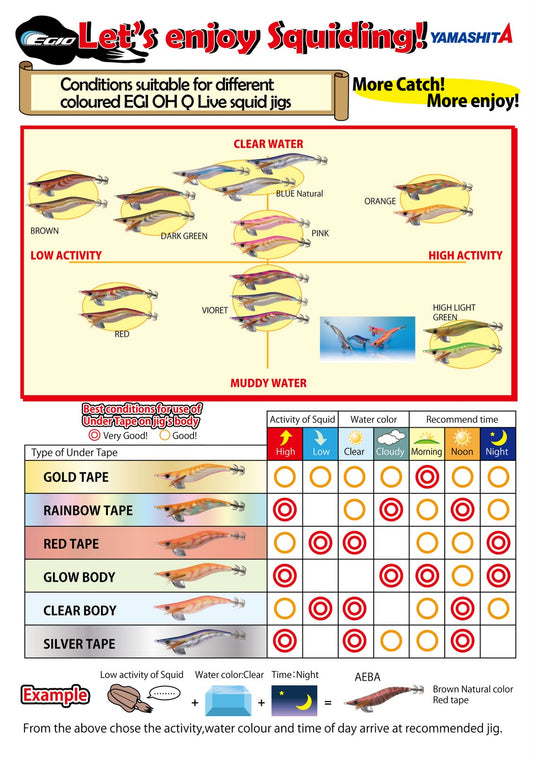
LURE SIZE
Jigs come in a variety of sizes. Depending on what squid you’re targeting and where will determine the jig size you use. In and around the estuaries and wharves you’d opt for a 2.0 or 2.5 size lure (this is the length between the eye of the jig to the start of the hooks in inches.) When fishing outer reefs you may need a lure that sinks deeper or can sink well in the waves and current which is when you’d opt for a larger lure, something in the 3.0 or 3.5. Alternatively if you’re fishing from the ocean rocks and you need to get long casts it’s important to keep the size of the lure in the 3.0 size to help reach the required distance.
SQUID JIGS
YAMASHITA NAORY SQUID JIGS
Heading

HOW TO WORK THE LURE
As with any type of lure fishing there are a number of techniques you can employ to attract squid. Sometimes, it’s the lack of action that can attract squid. Some of the biggest squid have taken lures that have been left in the rod holder but we’ll go through two tried and tested techniques.
Hopping
Quality jigs are not only designed to sink well but also designed to dart side to side with the lift of the rod tip. This technique is meant to mimic a prawn trying to escape it’s prey. The technique
is simple, let the lure sink to the desired depth (close to the bottom) then quickly lift the rod two or three times whilst winding at the same time to get the lure moving aggressively through the water column. A squid will tend to attack the lure whilst the lure is sinking so be aware that with the start of each lift there’s a chance there will be a squid already attached to the lure.
Slow roll
This is a very simple technique which can be very effective - especially for kids and those who aren’t experienced. Basically you cast your lure as far as you can, let it sink close to the bottom and then slowly wind it in. This technique is aimed to attract the squid’s inquisitive nature to check out the lure and attack it.
Since you’re always tight with the line the squid will automatically hook itself to the lure.
Tip: Drop down and watch the lure sink and count how long it takes to reach the bottom. Then with each cast count down to that number whilst it’s sinking to allow the lure to be close to the bottom and in the “strikezone”
USING BAIT FOR SQUID
If lures aren't your thing you can use bait! Squid love attacking a fresh fish bait. You will need a float and a specialised squid spike. This is a metal spike that goes through a dead fish with a eyelet at the end of it so you can tie it to your line and at the other end are the backward facing hooks. The theory is you cast your presentation out or drift it behind the boat. The bait sits around 1 metre or so underneath the surface tempting a squid to take it. Once a squid grabs the bait and starts pulling back it will hook itself. All you have to do is keep an eye on the float and once it goes down simply wind the squid in.
Tip: Use fresh/tough fish baits like a yellowtail If you use a softer bait like a pilchard the picker fish will pick it clean off.
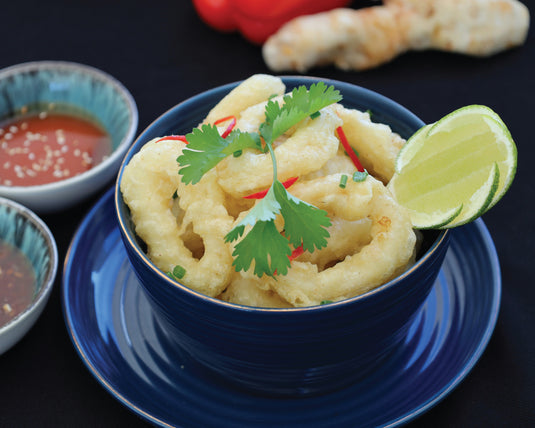
EATING SQUID
Squid is delicious and fresh squid is even better. If you’re wanting to keep a few squid for the table you’d want to look after for your catch. A little bit of care goes a long way to preserve the taste. When you’ve landed your squid it’s important to dispatch it really quickly. This can be done by removing the head with a knife or using a specialised squid spike. Once dispatched you can leave it on ice or in a cool rock pool. Just be careful not to pop the ink sack, squid’s ink is quite acidic and can damage the flesh so it’s important to keep the squid clean.
